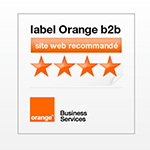
A small conversation with Olivier Blanchard (@thebrandbuilder ) on Twitter left me with an interesting question: what drives us into the need and will to change long time cultural habits (the kind of paper we are writing on), if not fancying novelty? My take is that setting our mind in a different environment not only enables a different perception of our surrounding, even if this environment is as trivial as a sheet of paper, but also changes our very way of thinking, in this case helping us fostering new ideas. Typically, it means emergence.
Technology always has deeply influenced our lives and behaviors. The wheel had revolutionized our geographical influence, electricity allowed us to extend our physical abilities, all of this because some people shifted their thinking from the primary destination of these technologies to new uses, empowering their real potential. Innovation always has been a matter of shifting the way we look at current objects, behaviors, usages or processes, finding and leveraging new patterns from the existing.
2.0 technologies are already changing the way we are using the Web, the way we are connecting, conversing and interacting with each other. We discovered that these conversations are a totally new way to learn, to collaborate and to exchange knowledge, but most of our initiatives are still about harnessing these technologies into existing models. To go further, really unleash their potential and embrace the systemic changes they are allowing, we all need a shift.
One of the current trends in Enterprise 2.0 frameworks is the use of social tools to optimize business processes, to fit them into the existing, or to replace them when (and only when) they fall short. This, of course, will minimize failure cases, will speed up business efficiency and facilitate adoption in organizations. But…. where is the shift? Our process driven businesses are no more than thirty years old, and were born from a misunderstanding of Japanese heterarchic and consensual social culture. A process-oriented approach to Enterprise 2.0 won’t allow place for the most powerful aspects of what the Social Web emphasizes: self-organization, non deterministic outcome, unconstrained trust, informal knowledge capture, borderless ecosystems, etc.
We have no tangible, rational proof that the process driven organization is the best model for today businesses, apart from “it works better than before” statements. One of the main reasons why companies are not ready to shift to another, networked, model is risk avoidance. While sustainability, and the gain of new competitive advantages, are crucial for any business, risk avoidance is a management and delivery model which literally turns its back to the non-linear complex world we are living in, and are in fine unsustainable. The very nature of CAS makes them unsuitable for complicated rules and determinist mechanisms, and complexity must instead be embraced with simple, quickly reconfigurable rules.
Marketing, too, needs a shift to truly take into account and take advantage from new customers’ behaviors. A drastic change happened since Peter Drucker wrote that marketing and innovation are the two basic functions of enterprise; both are now tightly connected through direct unbiased interactions with customers. The rise of Social CRM tools allow marketers to get insights from consumers and exchange knowledge to build better customer experiences. This dive into the Social Web and into the conversations blooming everywhere is of course a gold mine for today’s marketing. But if the data those conversations convey is capital for sales or the customer relations department, the weak signals embedded into those interactions are even more important for innovation and for every core business activity. By allowing putting the customer’s voice at the center of organizations, Social CRMs are true design thinking tools. Here lies their real power. To harness it, marketers, from being an interface between businesses and customers, must shift to become real ‘trends amplifiers’, and get ready for a role convergence with innovators, leaving data crunching and mining to an evolving sales department.






Hi Thierry,
good an thought-provoking post.
I agree with you that a “shift” is required to meet the upcoming challenges and opportunities, i.e. in particular putting the customer in the center and merging innovation and marketing activities. This can be approached by leveraging the right tools (e.g. Social Web) in an appropriate way.
However, isn’t it possible to integrate collaboration / self-organization together with a process-orientation? If we take an innovation process, for instance: there is ideally room for creativity / exchange / collaboration in the front end, followed by an efficiency-oriented idea execution – combined constituting the overall process, starting from and ending with the customer.
What do you think?
Regards
Ralph
Hi Ralph,
fair point. We won’t see, and this is not desirable, the disappearance of processes, notably in the execution-production field. But as the strategic need to empower individuals (the micro-foundations level of dynamic capabilities) emerges, we will have to shift from a “processes at the service of business” to a “processes at the service of people view”, service design thinking in other words. Rather than embedding people tasks into processes, a better choice would be to embed those processes into networked collaboration.
Thierry
congratulations on a very well argued post. I have been on this same track for a while now, yet you have captured the essence much better than I have done sofar.
That is not say that I think we might be missing a trick in how we talk about this with business execs – the ones you rightfully mention who are risk averse and refrain from going full out.
Inspired by and building on your post, I wrote one myself – adding a few suggestions on how we could make the case perhaps even stronger using different language. You can find it here, hope you agree: Enterprise 2.0: we need to stop preaching in the language of the converted – Iconoclast @ work http://bit.ly/aRgYBx
Thanks Berend,
you are raising an important issue there. Our job, as practitioners, bloggers, whatsoever, is to keep on driving execs step by step into new, blatantly more sustainable tracks, while envisioning what is the necessary future of organizations. Our world is more Darwinian than ever, and evolution is what will keep orgs alive.
As you wrote, we have to “speak the language of today’s business leaders” and try to figure out the big picture, if any, so they will only have to follow the yellow brick lane…
Very strong and well-articulated post, Thierry.
But as the strategic need to empower individuals (the micro-foundations level of dynamic capabilities) emerges, we will have to shift from a “processes at the service of business” to a “processes at the service of people view”, service design thinking in other words
Exactly.
It seems clear to me that (eventually) this will be the way work is done. The adaptation(s) will have to happen, sooner or later.
A very interesting (and pretty much overlooked) book from 2005 goes into these issues in a deep way. The title is “The Support Economy – why corporations are failing individuals and the next episode of capitalism”, by Shoshana Zuboff and Jim Maxmin. Recommended.
Typically, society changes ahead of commercial organizations and that’s the case now: individual interests have moved far out in front of the ability of companies to serve them. (quoting Soshana Zuboff)
So true.. Thanks for the link and for the compliment, Jon. Power, and the way organizations as well as individuals think they earn it, is our worst enemy in many respects.
Beautiful! Process is a key area of focus as we figure all of this out. I just haven’t figured out ‘why’ it’s so relevant other than we fail to understand how to embrace the paradox. As we learned to embrace digital technology, we adopted a very binary mindset: either, or — if, then. Even ‘rules’ have to be codified to a binary form, vs. the very real, complex form that is needed, like “when…”.
We are faced with moving from black/white to infinite shades of grey (even before we attempt the full color spectrum). To do so requires design. The more we understand how to embrace the entire design spectrum in our solutions, the better off we will be (see diagram: http://www.fastforwardblog.com/2009/09/16/e2-0-unleashing-the-potential/).
Currently, I’m trying to absorb at a neural level all that Charles Handy introduces in “The Age of Paradox.” We do not live in a world of dualities, we live in a world of paradoxes — the embracing of the dualities to capitalize on a new ‘middle’ — a moving turbulent middle — the crest of the wave.
I have to laugh at the ‘risk avoidance’ statement. How foolish we are in our narrow focuses. A work assignment was given a ‘cease and desist order’ from the lawyers in two companies. Ten days later it is not resolved. The monies spent already will NEVER be recouped by the billings associated with the project, and yet where is the larger ‘divine eye’ that can see this and send down a booming voice of wisdom to stop the foolishness?
Same kind of foolishness has invaded our whole societies, where ‘risk avoidance’ is named ‘precautionary principle’, but expresses the same reluctance to embrace complexity and, as you so rightfully write, its inherent paradoxes.
Look for instance at the recent vaccination frenzy against swine flu. How much will it cost us? For France, figures are up from 1 billion euros to 2, including communication campaigns and failed logistics.
Having worked ‘inside’ of our government’s Centers for Disease Control and Prevention (http://cdc.gov/) to see the volumes of money spent simply to mollify the bad choices/behaviors of people and to manage warehouses full of posters and other ‘promotional’ materials under the guise of ‘information’, I shrink over your mention of swine flu vaccinations: http://www.dailynews.com/opinions/ci_13585800
Have you folks read this beautiful short essay by a friend of mine (Bruce Stewart) titled “What Organizations Value Most of All”? He’s written a very well done interpretation of Handy’s premise in the book “The Gods Of Management” as applied to today’s context.
Jon, Paula,
you are making my day by filling my bookshelves for the forthcoming weeks!
Process typically is optimized to ferret out variability and failure. It’s the antithesis of the environment needed for innovation, a means to embrace ‘constructive failure’: http://entrepreneur.venturebeat.com/2010/02/05/want-to-succeed-try-failing/